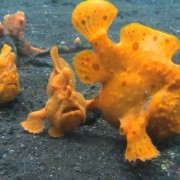Barrel Jellyfish

Barrel Jellyfish off St. Michael’s Mount
Barrel Jellyfish
Every year they appear off our Cornish coast in swarms. As big as a dustbin lid these aliens have been drifting through our oceans for over 500 million years. Jellyfish – the very name strikes terror – and these are giants!
Yet jellyfish are some of the most ancient and simple animals on the planet. Because they have no brain, heart or blood. Their soft bodies are over 90% water, and they move in a mesmerising pulsing motion operated by a simple net of nerves. Though infamous for their stinging tentacles, most species are harmless to humans.
Sea Monsters or Gentle Giants?
Several jellyfish visit UK waters. The Barrel jellyfish is our largest, with a diameter of up to 90cm and weights of up to 35 kilos. And in summer and autumn they swarm off the coast, sometimes washing up in large numbers.
These giant jellyfish swarms cause quite a stir. However they are gentle giants. Barrel jellyfish feed entirely on tiny plankton, so their sting is too weak to hurt humans. In fact so harmless is their sting that many have small fish living in their barrels, darting out to catch prey and then shooting back to the safety of their ever drifting home.
An ocean oddity
The Barrel jellyfish has a strange appearance, even compared to its relatives. It has no trailing tentacles around the bell, but has eight, thick arms underneath. Its arms end in paddles covered in frilly, cauliflower-like tissue where they meet the body. If you look close up, these frills are small, dense tentacles around hundreds of little mouths used to catch and eat their prey.

Close up of barrel jellyfish
The swarms explained
Barrel jellyfish swarm in warmer summers when there are large plankton blooms offering a plentiful food supply. Usually they drift in the open ocean, but blooms in warm, shallow water bring the jellyfish towards the coast. In winter they will return to deeper waters.
Part of the ecosystem
Barrel jellyfish are important for supporting other species. An amphipod crustacean Hyperia galba lives in the body cavities of Barrel jellyfish, feeding on the eggs and food scraps. Jellyfish are also prey for the Leatherback turtle (Dermochelys coriacea), which migrates to cooler northern waters to feed on the summer swarms. We did spot a leatherback turtle last year but he was too far away and by the time we got close enough to film he slipped below the surface. Maybe luckier this year…

Barrel Jellyfish Cornwall









